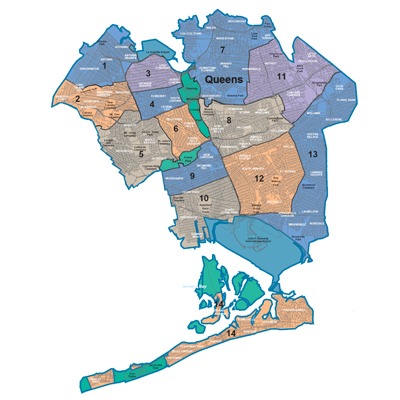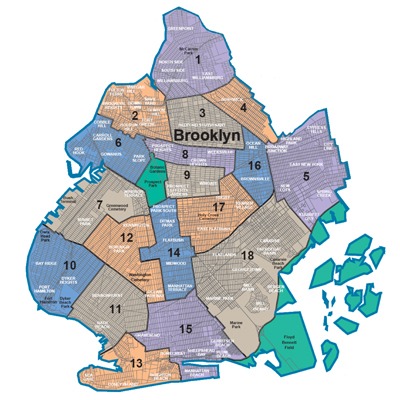Curriculum
At All My Children Day Care we have a very exciting, hands-on curriculum that offers stimulating innovative instruction throughout all levels of our program: Infant, Toddler, Nursery , Pre-K , Early Learn, Special Education and Universal Pre-K .
Our programs are tailored to meet the needs of the children and communities we serve. The Creative curriculum and Common Core Standards along with Music, Movement, Drama, and Nature programs are the foundation of our curriculum. Our programs are challenging, cognitively engaging and provide exciting learning opportunities throughout the day.
Infants/Toddlers. Our infant and toddler programs meet the individual needs of our students. During the infant and toddler stages, children find out who they are, what love and being loved is, and they start to understand their competence. This is also the stage of developing relationships with others and responding to them. The youngsters learn what it means to express their feelings, and they are at the height of their emotional, social, physical, and cognitive development.
We know that routine is important for children in order to get them focused on learning and we address five routines to get them to understand self-reliance and confidence:
- Hellos and Goodbyes
- Diapering and Toileting
- Eating and Mealtimes
- Sleeping and Nap time
- Getting Dressed
We also know that activities are crucial to learning as children grow and take greater interest in their environment. The following are eight activities that we address:
- Playing with Toys
- Dabbling in Art
- Imitating and Pretending
- Enjoying Stories and Books
- Tasting and Preparing Food
- Exploring Sand and Water
- Having Fun with Music and Movement
- Going Outdoors
As infants grow into toddlers, we help them explore their environment even more by providing toys and materials appropriate for their age that help build and refine their motor skills. We also have outdoor play and building blocks areas that further improve children’s motor abilities.
Three-Year Olds. When children turn three, their self-control increases. They want to please and are highly susceptible to praise. Their increased motor activities enable them to handle larger objects, and block play usually increases their carrying and lifting capacity and contributes to their building skills. Fine motor development of three-year olds progresses further and enables them to pick up small objects easily and adult grasp is stimulated by using crayons to write and color. Play is still an important part of their development, and unlike two-year old children who are involved in parallel play, the three-year old begins to play cooperatively especially when play is structured by their own imaginations.
Four-Year Olds. As children turn four years old, they begin to test and feel their strength and power. They require climbing tools, ladders, boards, and building blocks to release energy and learn. The four to five year old seeks to satisfy curiosity through the discovery process and our learning environment at AMC is arranged in a way for them to have the freedom to choose materials provided for both individual and group learning.
Learning Centers. The following are the Learning Centers set up at our day care:
Art: The Art Area is a place filled with materials that children can enjoy and create their ideas in visual forms. On the table or easel, children can draw, paint, knead, cut, glue, and put together unique art projects of their own. They can create designs and express what they know and feel via varying artistic media.
Dramatic Play: Drama is storytelling through action, dialogue, or both. We provide children with clothing they can use to dress up and pretend, blocks that can serve as props that can transform a city, and puppets that can act out a story. They take on character roles and recreate real-life experiences. As they indulge in the theater arts, they express their feelings, solve problems, think abstractly, and learn to cooperate with others
Library Area: The Library Area is a very important part of the classroom. It is where children gain the foundation for reading and writing. The library is also a place where children can relax and enjoy the wonderful world of children’s books. We encourage children to look at books, listen to stories on tape, retell stories, and to scribble and “write” throughout the day. Our staff reads stories to the children every day, and by reading, the children are introduced to new ideas while helping them handle problems and encourage their love for books.
Discovery Area: The Discovery Area is stocked with interesting materials that are inviting to children’s love of exploration and investigation. It includes basic tools, objects, and materials from the natural world. Some of these tools are magnifying glasses, balance scales, and magnets that further augment children’s discovery skills. The Discovery Area is located near the window where children can observe nature and have natural light for growing plants and exploring shadows and reflections. The area helps build vocabulary and language skills, number concepts, patterns and relationships, measurements, data collection, process skills, life sciences, physical sciences, and knowledge of the Earth and our environment.
Sand and Water: Playing with sand and water involves sensory experiences that appeal to young children. It challenges the children’s minds and promotes all areas of development. When children play with sand and water, they often express their thoughts and feelings through their imagination. Children strengthen their small muscles as they mold wet sand and scoop water. They develop fine motor skills and hand-eye coordination by working with props and by pouring water into a funnel or sifting sand through a sieve. Their gross motor skills are built up simply by carrying buckets of sand or water outdoors. Through careful observations, comparison, and measurements, children learn the properties of water – it can be splashed, poured, and frozen. The dry, solid sand can be sifted, raked, and shoveled. The children learn about volume and capacity. They explore the causes and effects of sand and water, and they can let their imaginations run wild.
Blocks: Wooden blocks naturally appeal to young children because they feel good to the touch, are symmetrical, and invite open-ended explorations. When children construct, create, and represent their experiences with blocks, they grow in each area of development. In the Block Area, children negotiate for materials they want to use, determine how many of them can work in area, care for the materials, and follow the rules for building safely. They also exchange ideas while developing their small muscles by carrying and carefully placing blocks together. They gain strength in their large muscles using hollow blocks, and their hand-eye coordination is improved when they carefully balance blocks to prevent them from tumbling. As children experience the world around them, they form mental pictures of what they see, and playing with blocks gives them the opportunity to recreate these pictures in concrete form. Children also learn about sizes, shapes, numbers, orders, areas, lengths, patterns, and weights as they select, build and put away blocks.
Furthermore, we provide the children at our day care with diverse materials appropriate for their age to help them grow in all areas of development. Parental participation is an important component of our program, and we foster parent involvement through various parent-child workshops and other parent-child activities through out the year. The families receive a very busy and truly enriching program!




